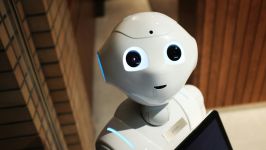
The report on Architecture and Design Trends published in April 2025 by InfoQ illustrates that the way computer systems are designed is changing fast. The industry is experiencing a fundamental shift toward event-driven, asynchronous, and distributed architectures, driven by the demand for reliability and scalability, as well as the necessity to manage new levels of workload that arise with the proliferation of AI integrations. This evolution makes it a crucial task to find the balance between innovation and stability, ensuring systems can scale effectively while maintaining performance and reliability.
To get an insight into what is now going on in the industry and what to expect in the upcoming years, we've talked with Viacheslav Maksimov, a skilled software engineer with a sharp focus on designing and scaling high-load, fault-tolerant systems, who currently works at Auto1 Group, Europe's leading digital automotive platform. With over a decade of hands-on experience in building numerous projects, including education platforms and e-commerce solutions, he possesses a deep understanding of the industry, which he has shared in several scientific articles. In the interview, he shared his hard-earned insights into the evolving landscape of high-load systems in 2025.
Viacheslav, with your deep background in back-end development for high-load systems, how do you see the demands of 2025 reshaping core system architecture?
The focus of developing high-load system architecture in 2025 is creating even more adaptive and resilient systems. The main pressure comes from two directions: the explosive growth of real-time data and the need for systems to be able to scale unpredictably without downtime. To answer this demand, we focus on using architectures that are modular, event-driven, and self-healing, so they are able to operate stably in a rapidly changing environment, even during the unpredictable surges of the load. One of the tendencies worth mentioning is the shift toward "smart" microservices that are smaller when necessary, bigger when practical, and supported by solid platform engineering.
At the same time, observability and automation become critical elements of the system. In other words, systems must be able to operate efficiently and provide deep visibility of their operations at every layer. One of the main characteristics of the system is the way it reacts to failures or critical situations, such as power outages. We aim to design high-load systems with such possibilities in mind, so the user experience isn't disrupted even if unpredicted circumstances arise. Currently, architecture can be seen living organisms that are constantly adapting, learning, and optimizing to stay resilient under ever-increasing loads.
You've worked extensively with distributed transactions and large-scale data processing in the e-commerce and education sectors. How are distributed systems evolving to keep stable performance, consistency, and availability at a massive scale?
Distributed systems have to balance high availability, data integrity, and low latency across multiple services and regions. An example of this is our automotive platform at Auto1 Group, which operates a large-scale, transactional vehicle marketplace. For such a system to operate efficiently, the right balance between consistency and latency is required, so the users do not experience delays, while all the data are transferred and stored consistently. Rather than strictly choosing between consistency and latency, modern architecture enables intelligent trade-offs, which let developers apply a more flexible approach.
At the same time, AI-assisted tools are playing a growing role in infrastructure management. Features like prediction of faults before they impact performance, autoscaling, priority-based load shedding (which temporarily drops non-critical requests), and adaptive throttling (which dynamically limits traffic) allow systems to gracefully handle spikes of user activity, providing everyone with a smooth experience.
We're also seeing a major shift toward event-driven and asynchronous patterns, often supported by CQRS and saga orchestration, to help large-scale platforms stay responsive and available, even under heavy load or during complex operations.
The biggest trend apart from AI? Contextual consistency—applying the right guarantees only where they matter. It's no longer about strict CAP trade-offs, but about building systems that are intentionally designed for scale, latency, cost, and domain-specific logic.
In short, distributed systems are maturing. We're moving to fine-tuned architectures that better match real-world demands.
Cloud-native and hybrid architectures are now the norm. Based on your experience in cloud infrastructure, what architectural patterns are critical for future-ready high-load systems?
Flexibility is the key to creating future-ready high-load systems. This means designing architectures that can combine resources across public clouds, edge computing, and sometimes even on-premises environments. Traditional patterns, like microservices, event-driven workflows, and mesh routing, remain their foundational role, but now they are only part of the picture.
To ensure said flexibility, infrastructure abstraction becomes increasingly important, which entails building a system that can run reliably across different platforms without being tightly tied to one. Techniques like sidecar patterns (using separate components to handle tasks like logging or networking), Infrastructure as Code, and GitOps (managing deployments through version-controlled code) help teams move fast while keeping systems observable and consistent.
In hybrid environments, managing application state becomes especially important, for example, balancing quick-response tasks with longer background processing. Another essential pattern is embracing asynchronous processing with managed event streams. Not everything has to be real-time, and building for eventual consistency where possible gives systems room to breathe at scale. Ultimately, it's about being cloud-smart, not just using the cloud, but designing architectures that leverage managed services for speed and reliability, while still retaining enough control to stay flexible and avoid vendor lock-in as the business evolves.
Given your recent work analyzing latencies for AWS Lambda serverless deployments, how do you think serverless computing technologies fit into high-load environments where low latency is critical?
One trend I see is the rise of hybrid serverless models, which combine serverless functions with containers or edge computing. In these setups, the most latency-sensitive tasks, such as user-facing operations, are handled closer to the user through edge runtimes or provisional concurrency. Meanwhile, less time-critical tasks, such as data enrichment or AI inference, are processed independently behind the scenes.
While cold starts (the delay when a serverless function spins up after being idle) remain a concern, their impact can be mitigated through techniques like function warming and asynchronous computing. However, these solutions may increase costs, so choosing the right framework and deployment configuration is the key to building an efficient infrastructure.
Ultimately, serverless works best when it's part of a layered, workload-specific strategy. By assigning the right technologies to the right tasks, teams can balance latency, cost, and scalability more effectively.
As an expert in integrating AI solutions at Auto1 Group, what unique high-load challenges have you observed when embedding GenAI into a production environment?
It is important to note that we integrate AI not only in the development lifecycle, but also in multiple aspects of business operation, especially in the pipelines that require processing of unstructured and semi-structured data, such as text, images, PDFs, or embeddings. Integrating GenAI into production systems introduces a whole new category of performance challenges. Unlike traditional APIs, GenAI workloads are far more compute-intensive, unpredictable, and often triggered in real-time by user actions.
One of the key architectural concerns when integrating GenAI is handling peak throughput: as GenAI requests can spike suddenly, it's essential to build systems with autoscaling and intelligent request routing to maintain their responsiveness. Caching strategies need to evolve, too, as instead of caching simple, repeatable data, we often cache partial outputs or vector representations, which introduces complexity.
From the user experience perspective, consistency becomes a key characteristic, as people might tolerate a slight delay for high-quality AI output, but they won't tolerate inconsistent behavior. That's why we implement smart fallback mechanisms, asynchronous UX patterns, and feedback loops that keep systems reliable under pressure.
Another crucial piece of operational and efficient AI integration is observability. From day one, we need to monitor not just system metrics like latency and throughput, but also model behavior, accuracy, and cost per request. By design, systems integrated with GenAI systems don't just scale, they evolve, and your architecture needs to evolve with them.
As someone deeply involved in mentoring and system design, what skills and mindsets do you believe engineers must cultivate today to thrive in the high-load, AI-augmented systems of tomorrow?
Beyond technical skills, the most valuable skill for engineers today is adaptability. Today's engineers must be comfortable with ambiguity, evolving architectures, and systems that behave in probabilistic ways, which is typical when AI is present. A strong foundation in distributed systems and data flow remains essential. But to stay relevant, it's equally important to develop curiosity about AI tools and a deeper understanding of operational engineering, including how systems run in real-world conditions.
More importantly, the mindset is shifting to influence: instead of controlling every part of architecture, we create a system that self-optimizes, scales autonomously, and surfaces insights without explicit instructions. Finally, successful engineers today need to think systemically, not in silos. Collaboration across disciplines, including different domains, data, machine learning, and infrastructure, is what enables teams to build meaningful and scalable solutions.









